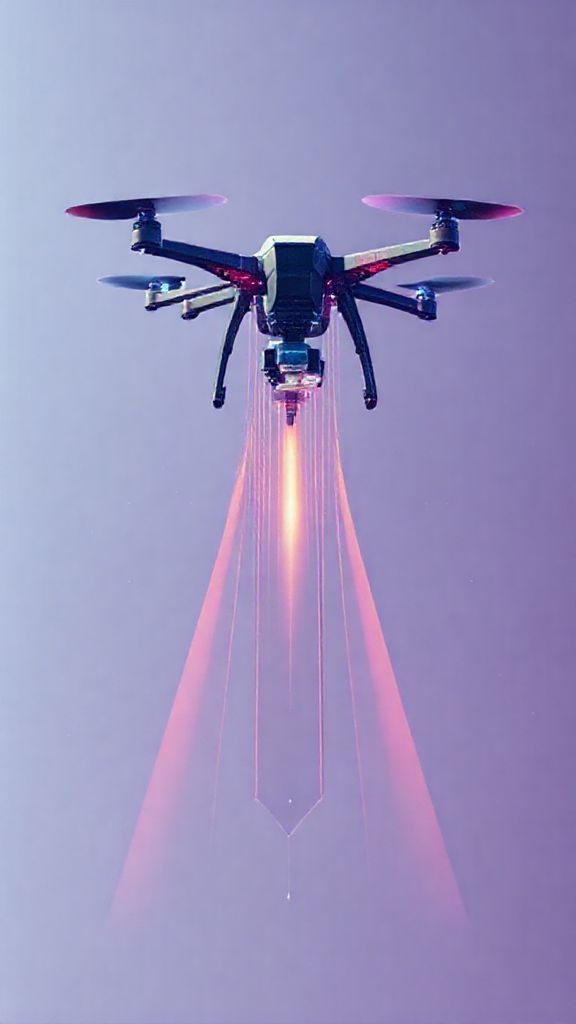Norway Paves Way For Future Warfare With Cutting-Edge Drone Swarm System
Norwegian Army Selects Valkyrie Drone Swarm from Six Robotics The Norwegian Army has selected the …
02. November 2025

Researchers at the Technical University of Delft (TU Delft) in the Netherlands have successfully developed an algorithm that enables multiple autonomous drones to work together seamlessly to transport heavy payloads. This innovative solution improves efficiency and enhances safety in various industries, particularly those dealing with challenging environments and limited payload capacities.
At the heart of this breakthrough is a sophisticated algorithm designed by the TU Delft team, led by robotics researcher Sihao Sun. The system’s core concept involves connecting multiple drones to a payload via cables, allowing them to carry significantly heavier loads than traditional drones. This innovative approach enables the drones to not only lift and transport heavy objects but also control their orientation in complex environments.
One of the primary limitations of current drone technology is its inability to carry substantial payloads due to weight constraints. “A single drone can only carry a very limited load,” Sun explained. “This makes it hard to use drones for tasks like delivering heavy building materials to remote areas, transporting large amounts of crops in mountainous regions, or assisting in rescue missions.” These challenges are further exacerbated by harsh weather conditions, unpredictable environmental interactions, and the need for precise placement in complex environments.
To overcome these limitations, the TU Delft team designed a system that adjusts drone positions in real-time to lift and transport heavy objects while maintaining control over their orientation. This is crucial for achieving accurate placement in challenging environments, such as offshore wind turbines or rugged terrain. By utilizing multiple drones connected by cables, the system can distribute the weight more evenly, allowing them to carry significantly heavier payloads.
The key challenge facing this technology lies in the fast coordination required between drones and external disturbances. Traditional control algorithms are often too slow and rigid for this purpose, making it difficult to respond effectively to dynamic movements or unexpected changes in the environment. To address this issue, the TU Delft team built their own quadrotors and tested them in a controlled lab environment.
“We used up to four drones at once, added obstacles, simulated wind with a fan, and even used a moving payload like a basketball to test dynamic responses,” Sun recalled. These rigorous tests allowed the team to fine-tune their algorithm and ensure that it could adapt to changing payloads and external forces without requiring additional sensors on the payload itself.
One of the most impressive aspects of this technology is its autonomy. The drones are programmed to navigate independently, adjusting for obstacles and disturbances along the way. Once given a destination, the drones take care of the rest, responding to their environment in real-time. As Sun noted, “You just tell them where to go, and they figure out the rest.”
While the system has shown remarkable promise in controlled lab environments, the TU Delft team is now working to prepare it for real-world deployment. Currently, the technology relies on external motion capture cameras for indoor testing, which limits its effectiveness in outdoor environments. However, the team is committed to overcoming this challenge and making their algorithm suitable for a wide range of applications.
The potential implications of this technology are vast and varied. In search and rescue missions, drones could be deployed to reach remote or hard-to-access areas, providing critical support and assistance. In agriculture, they could be used to transport heavy equipment or supplies to mountainous regions or other challenging environments. Remote construction sites would also benefit from the ability to transport heavy materials with greater precision and efficiency.
As the TU Delft team continues to refine their algorithm and prepare it for real-world deployment, the possibilities for this technology become increasingly exciting. With its fast, flexible, and robust design, this system has the potential to revolutionize industries that have long struggled with the limitations of traditional drone technology. By harnessing the power of autonomous drones working together in harmony, we can unlock new frontiers of efficiency, safety, and innovation.